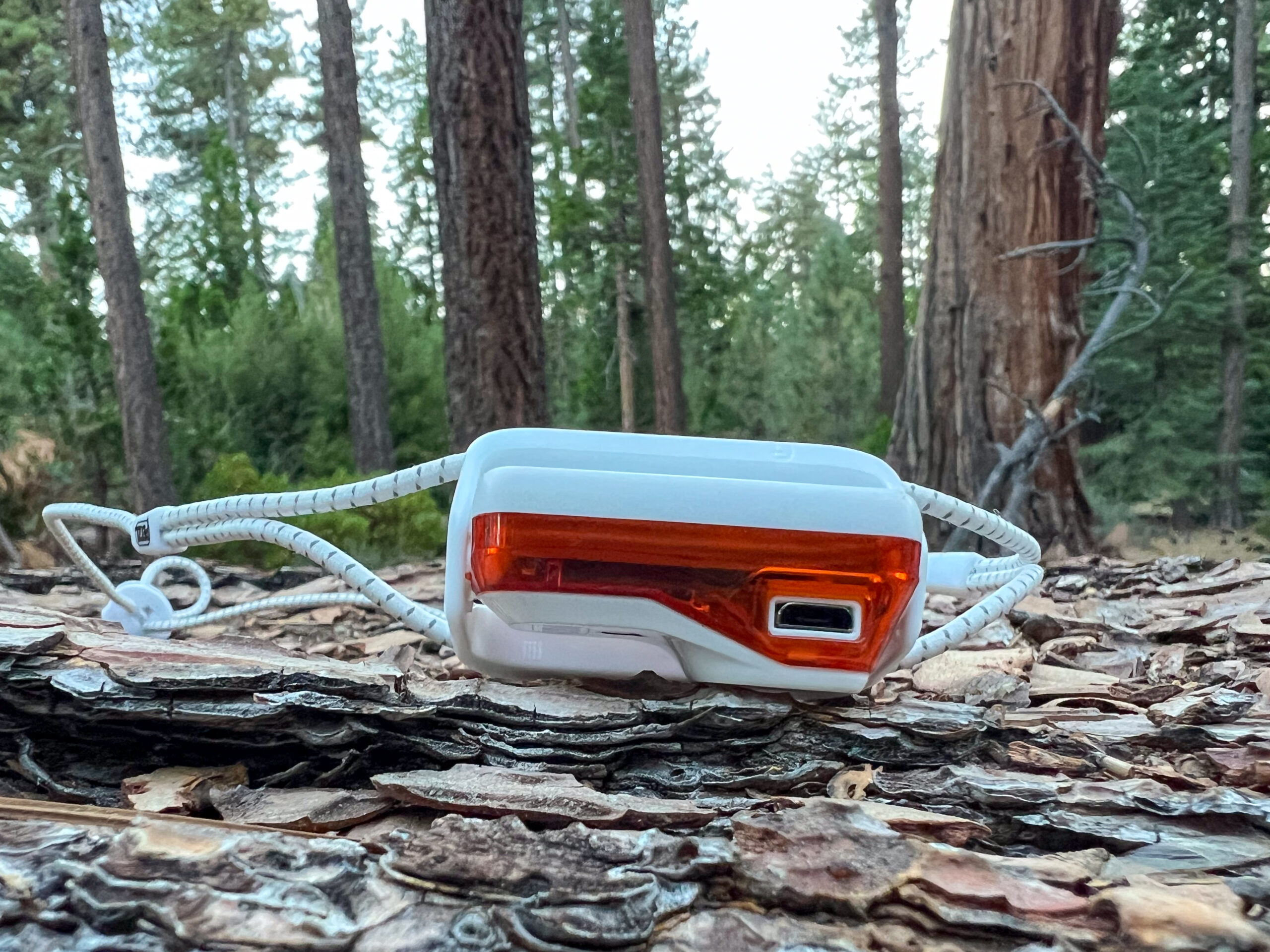Bottom line
The Petzl Bindi is a high-quality, minimalist, ultralight headlamp that’s ideal for light-duty training, primarily in front-country environments where long battery life isn’t a major concern. Weighing in at just 1.2 ounces, the Bindi is incredibly lightweight. It features an easy-to-use single-button design that we found very intuitive. We always favor rechargeable headlamps, so we’re pleased with the Bindi’s rechargeable platform. The shock cord design of the head strap, while not the most comfortable for extended use, works well, given the Bindi’s limited battery life. The 360-degree swivel design adds versatility. We like the Petzl Bindi, but it has a few notable downsides worth considering.
The bottom line is that the Petzl Bindi is a great choice for those who prioritize ultralight gear and need a reliable headlamp for shorter activities. Its compact design and ease of use make it a solid option for quick runs, short hikes, or even as a backup light in your pack. Unsure if the Bindi is right for you? Head to CleverHiker’s headlamp gear guide for more tested and reviewed options.
Quick Specs
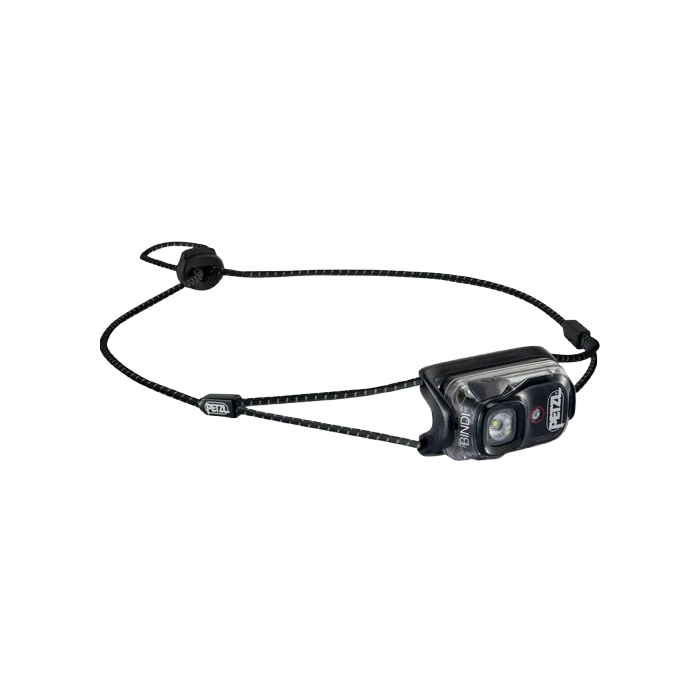
Petzl Bindi
Best Headlamp for Runners and Walkers
Price:
$50
Measured Weight:
1.2 oz.
Max Lumens/Beam Distance:
200 lm./118 ft. (36 m.)
Burn Time Low/High:
50 hrs./2 hrs.
Pros
- Ultralight
- Rechargeable
- 360-degree rotating head
- Simple single-button function
Cons
- Low lumens
- Long charge time (micro-usb)
- Low burn time
Illumination & Light Quality
At just 200 lumens on max power, the Bindi has the lowest lumen output of any headlamp in our test pool, aside from the Petzl Tikkid. This low power limits the Bindi’s range of uses. The Bindi is best suited for athletic pursuits in urban environments where ambient light can also help illuminate the way. We wouldn’t recommend the Bindi for moving quickly over technical or rough terrain where high illumination is needed. It’s adequate for use at camp, but for more demanding activities like trail running, rock climbing, or skiing, you’ll definitely need a more powerful light.
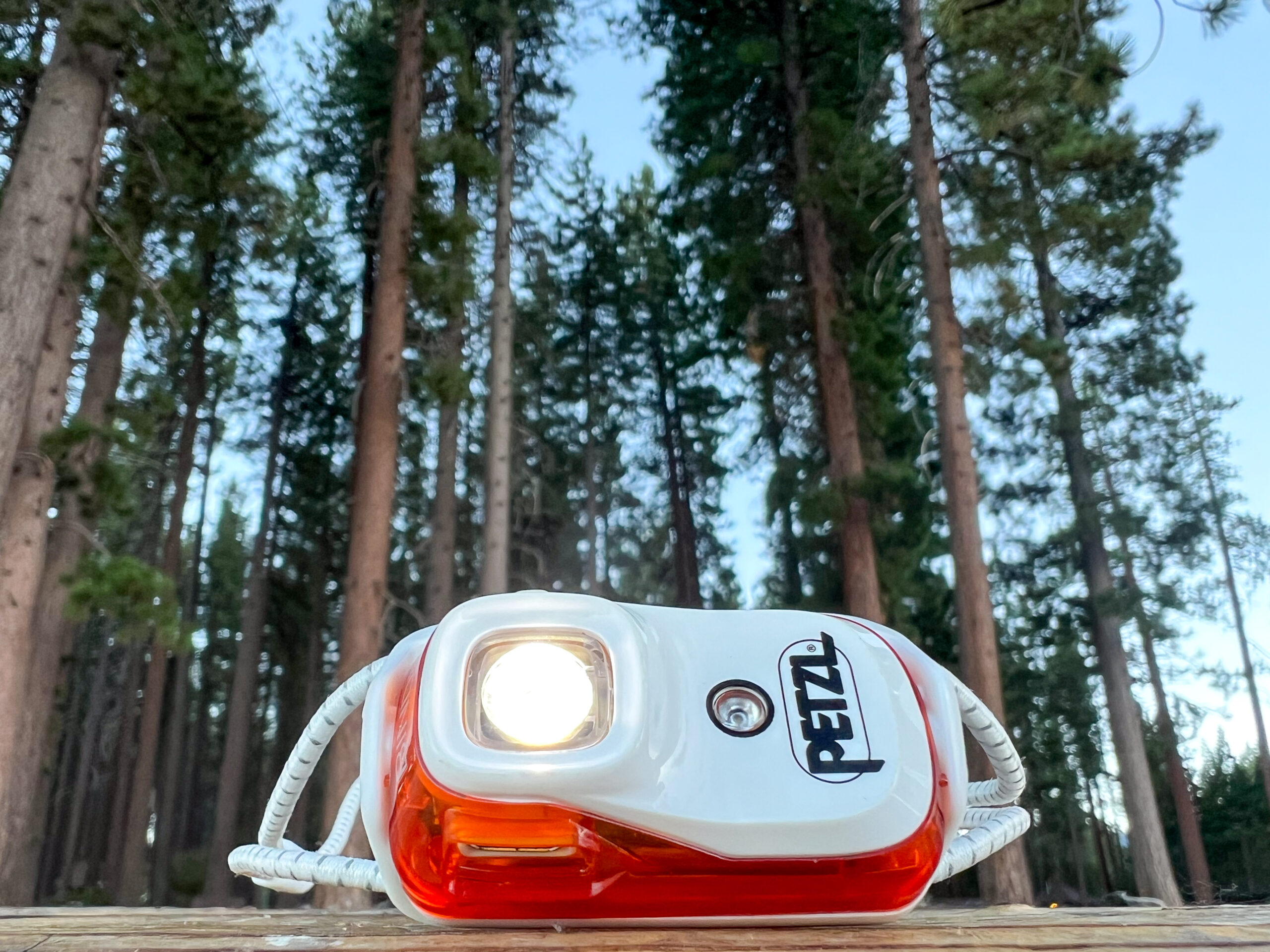
Burn Time
The Bindi has a shorter burn time than other headlamps we tested. You can expect about two hours of burn time on max power, which is quite low. In standard power, you’ll get around three hours of light. In the ultra-low 6-lumen mode, you can burn about 50 hours of illumination. However, the low-power mode is too dim for most activities, making it less practical for anything beyond basic tasks like reading in your tent or sorting gear.
A longer burn time would make the Bindi more versatile, particularly for those looking to use it on extended trips or during activities requiring consistent light output over time. This shorter battery life could be a limiting factor for users who plan on more intense or lengthy outdoor adventures. That said, for quick outings or urban runs, the Bindi’s burn time is generally sufficient.
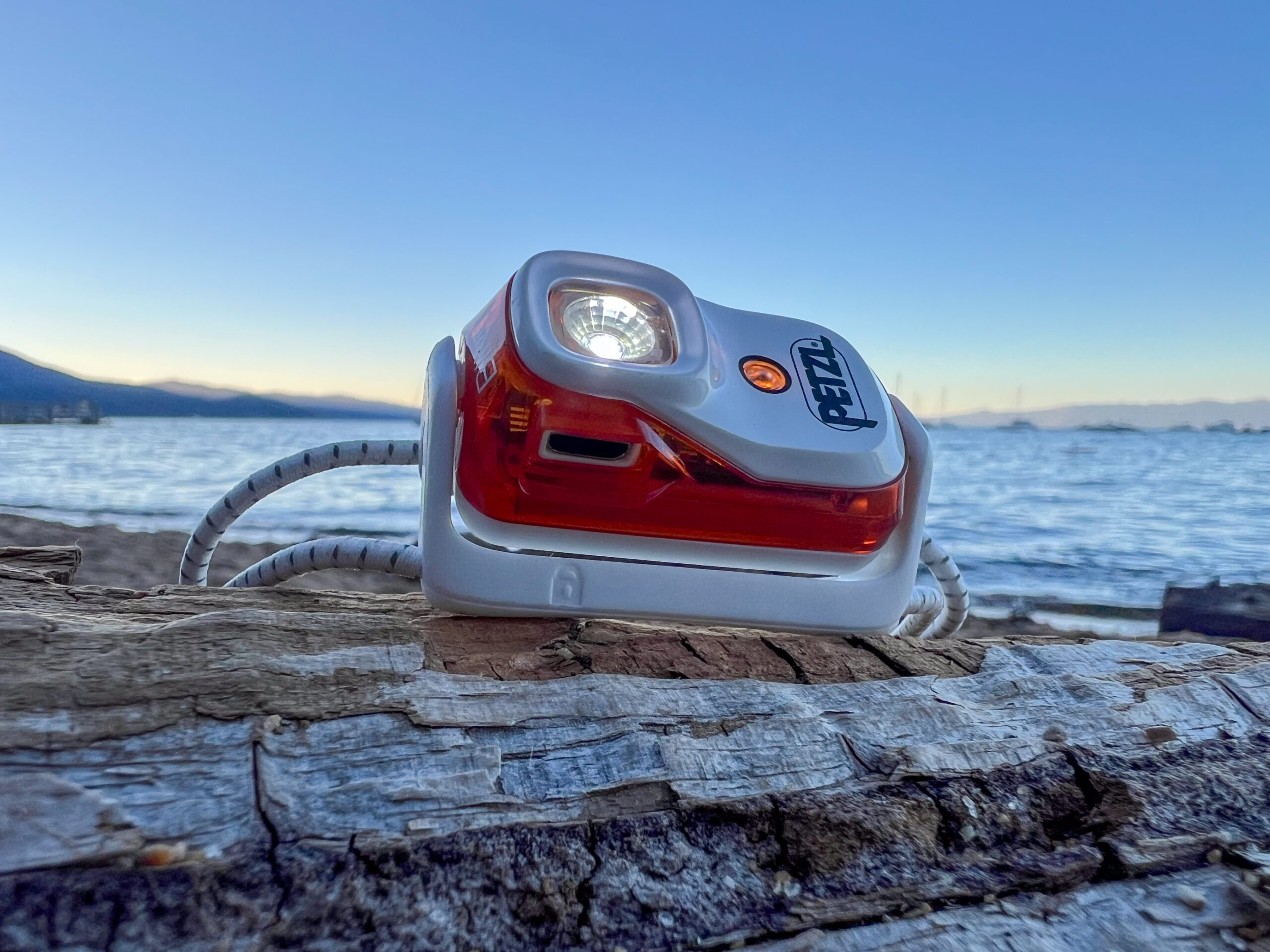
Weight
The Petzl Bindi is ultralight in every sense of the word. It’s the lightest headlamp we tested, coming in at 1.2 ounces—0.4 ounces lighter than its closest competitor. Gone are the days of bulky headlamps that weigh you down and constantly slide down your forehead. The Bindi’s ultralight design is a major reason it’s a fan favorite. It’s so lightweight that it’s often used as a backup light on serious backcountry expeditions where having a reliable headlamp is non-negotiable. In situations where carrying an extra light could be a hassle, the Bindi provides an easy-to-pack, minimalist solution, making it an ideal choice for those prioritizing weight savings without compromising reliability.
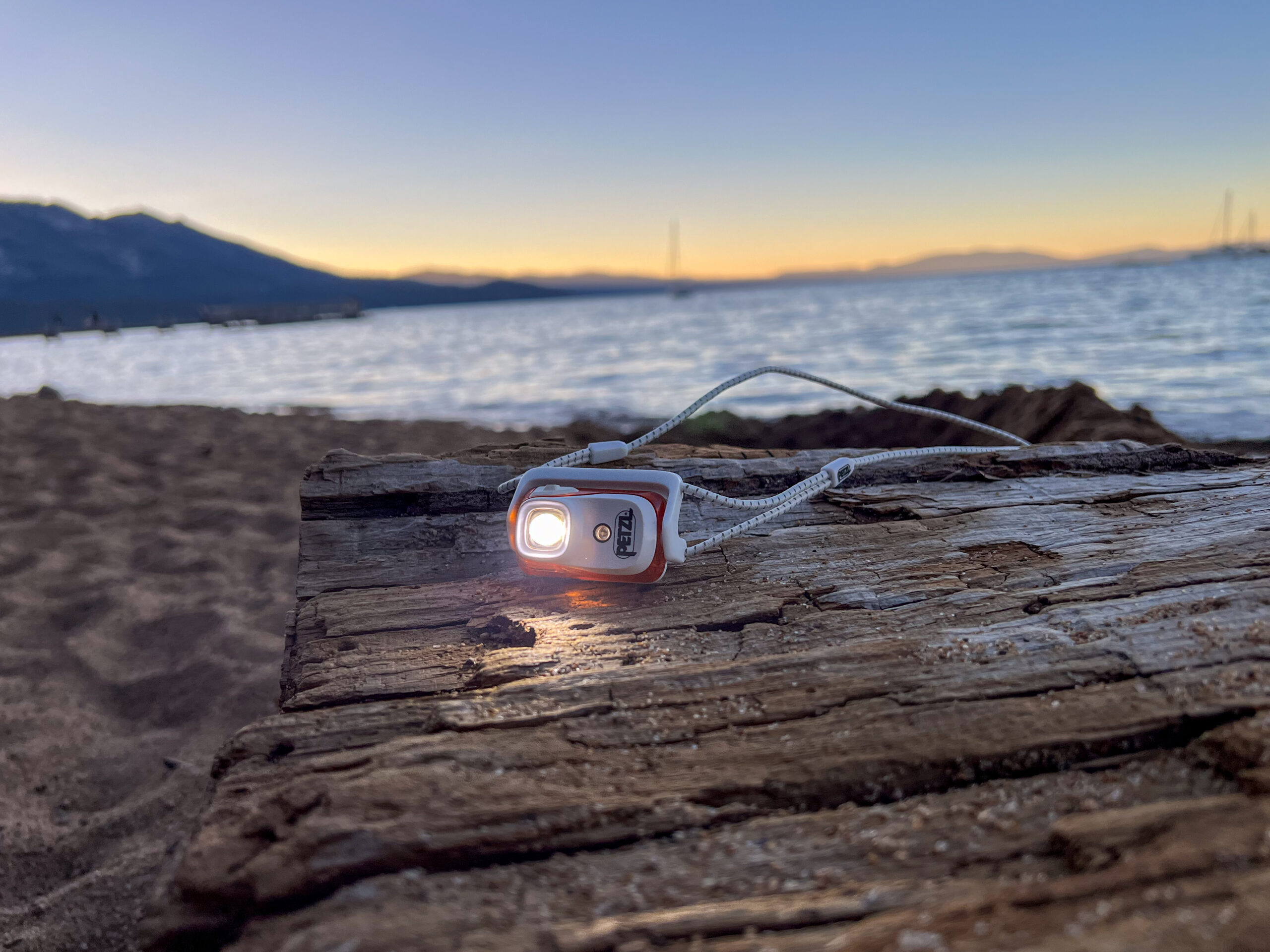
Comfort
Most modern headlamp straps loop behind the headlamp’s body, creating some cushion between the plastic and your skin. The Bindi is designed differently. In this model, the only thing touching your forehead is the plastic body of the headlamp. Initially, we thought this might cause some discomfort, but we were pleasantly surprised that wasn’t the case. We found the Bindi to be quite comfortable. The headlamp is so lightweight that you don’t need to overtighten the strap to keep it in place. However, if you overtighten the strap, the thin, shock-cord style strap can cause discomfort. It’s important to take your time and find a balance between long-term comfort and stability. We wore the Bindi long enough to drain the entire battery during our night runs, and once we dialed in the strap’s tightness to our liking, we didn’t experience any notable discomfort or fatigue.
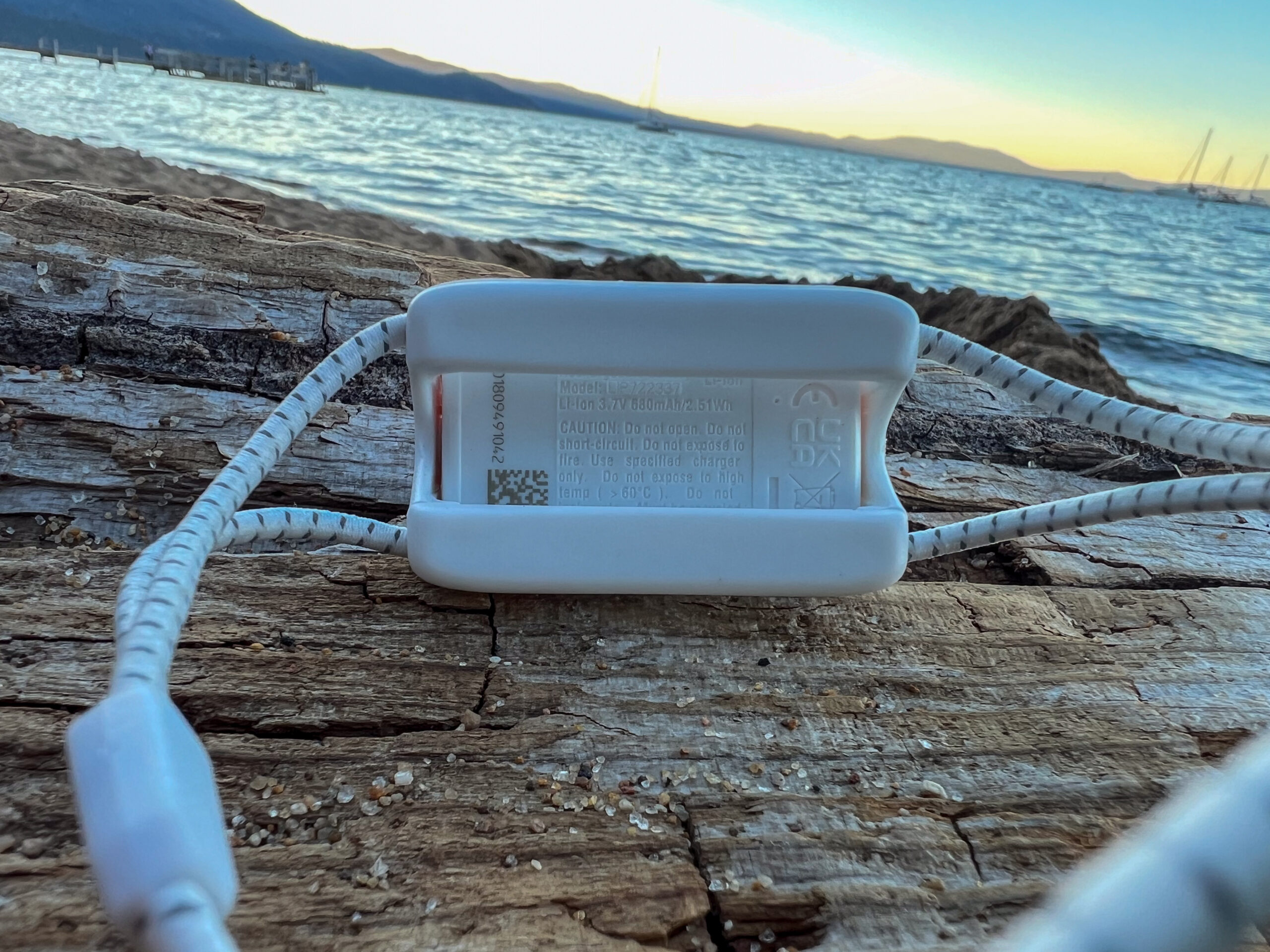
Ease of Use
With just a single button, the Petzl Bindi is easy to use, and its cycles are intuitive to figure out. Starting from the off position, one touch of the button turns the light on. As you continue to press the button, the light cycles through its three brightness modes: low, medium, and high. Holding down the button while the headlamp is on any brightness level switches it to red light mode. A short press in red light mode changes it to a red strobe. Holding the button down again switches it back to white light. It’s as simple as that. The button itself is small but protrudes just enough from the headlamp to make it easy to find and press. It even works well with gloves on, as long as they aren’t too thick.
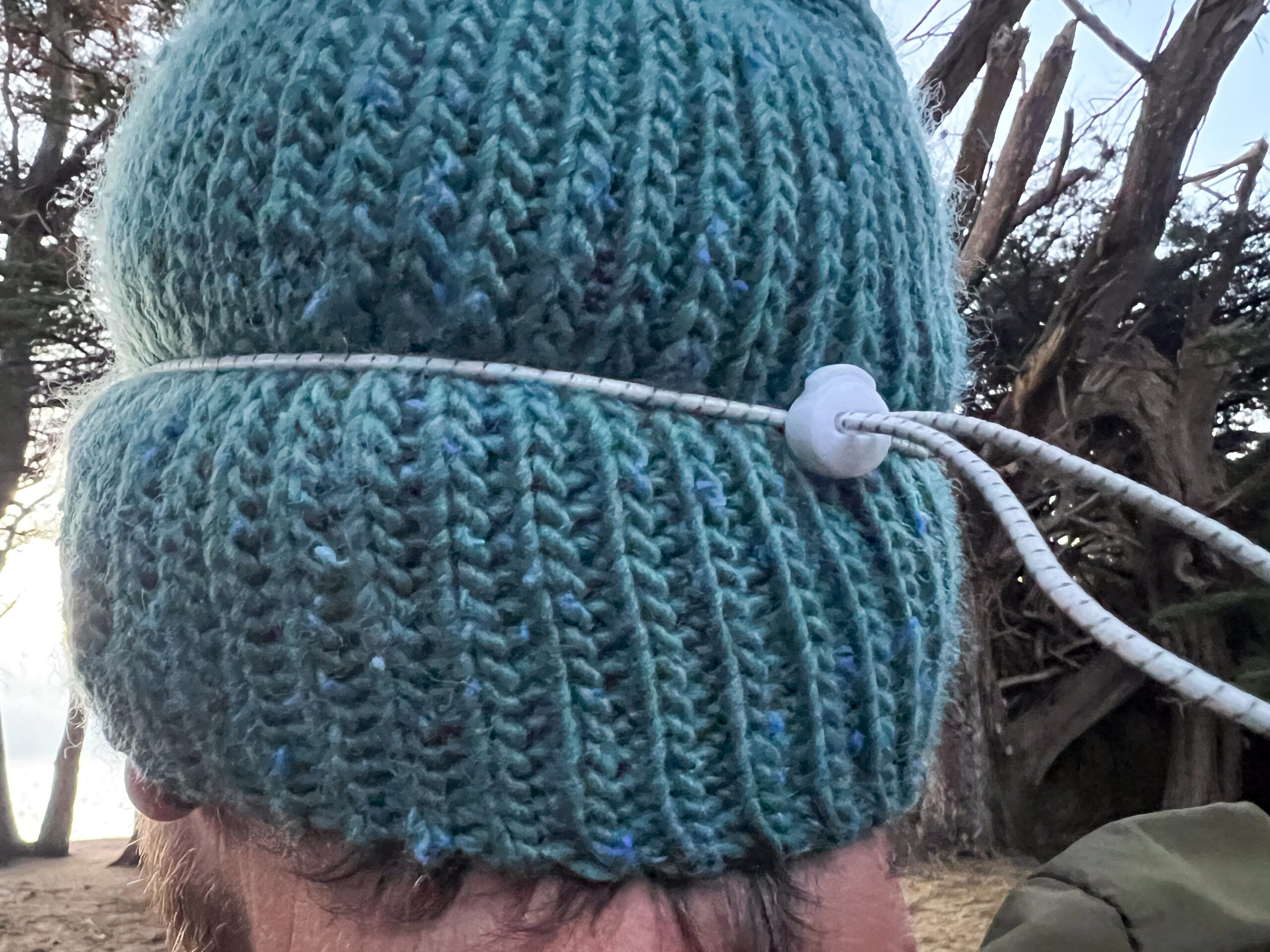
Features
The Petzl Bindi isn’t packed with features but offers some nice elements in a small, lightweight package. We appreciate the shift towards rechargeable headlamps, and the Bindi is a great example of this trend with its fully rechargeable design. However, we’d like Petzl to adopt a faster and more universal USB-C charging platform from its current micro USB. One unique feature is its 360-degree rotating head. Unlike most headlamps that click into fixed angles, the Bindi’s head adjusts freely and stays in place without clicking. Initially, we were concerned that this might require frequent adjustments during high-output activities like running, but we were pleasantly surprised to find it remained secure even with vigorous use. The 360-degree rotating head also allows the Bindi to be worn around your neck. It also includes a lock feature, a red light option, a battery life indicator, and IPX4 water resistance. Overall, the Bindi offers a commendable lineup of features in a compact and lightweight design.
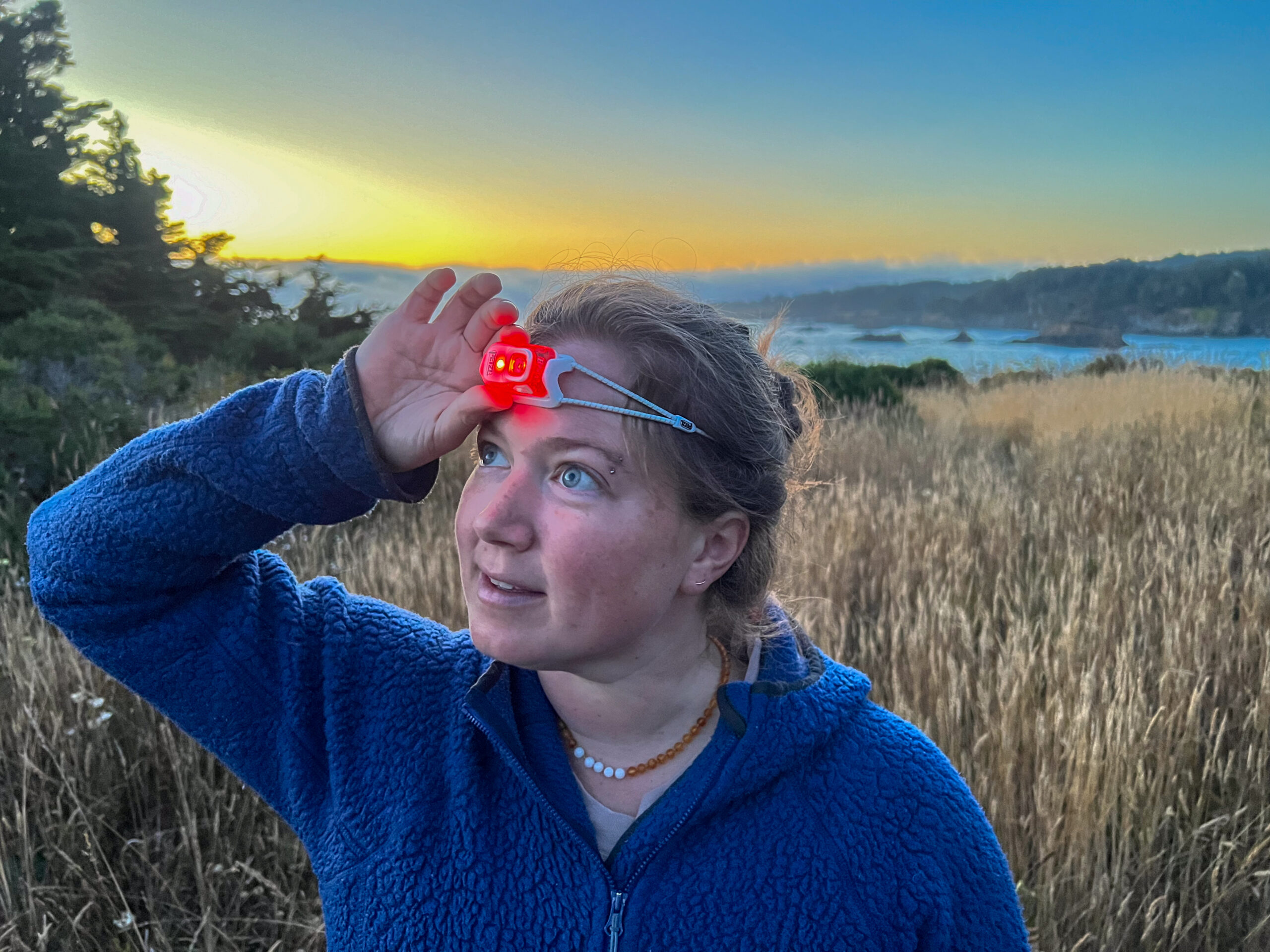
Should You Buy the Petzl Bindi?
The Bindi is an excellent choice for urban environments where a dead battery isn’t a matter of safety. It’s also suitable for short, low-consequence outings in nature. However, its battery life is a limiting factor; you wouldn’t want to rely on it for backpacking unless you plan to use it minimally. It’s also good for evening hikes or runs under two hours. Additionally, it serves well as a backup headlamp for high-consequence or technical pursuits. We wouldn’t recommend it for extended backpacking or long-distance running unless you use it on lower settings to extend battery life. The Bindi isn’t waterproof, and its charging port is exposed to the elements, so it’s best suited for fair weather conditions.
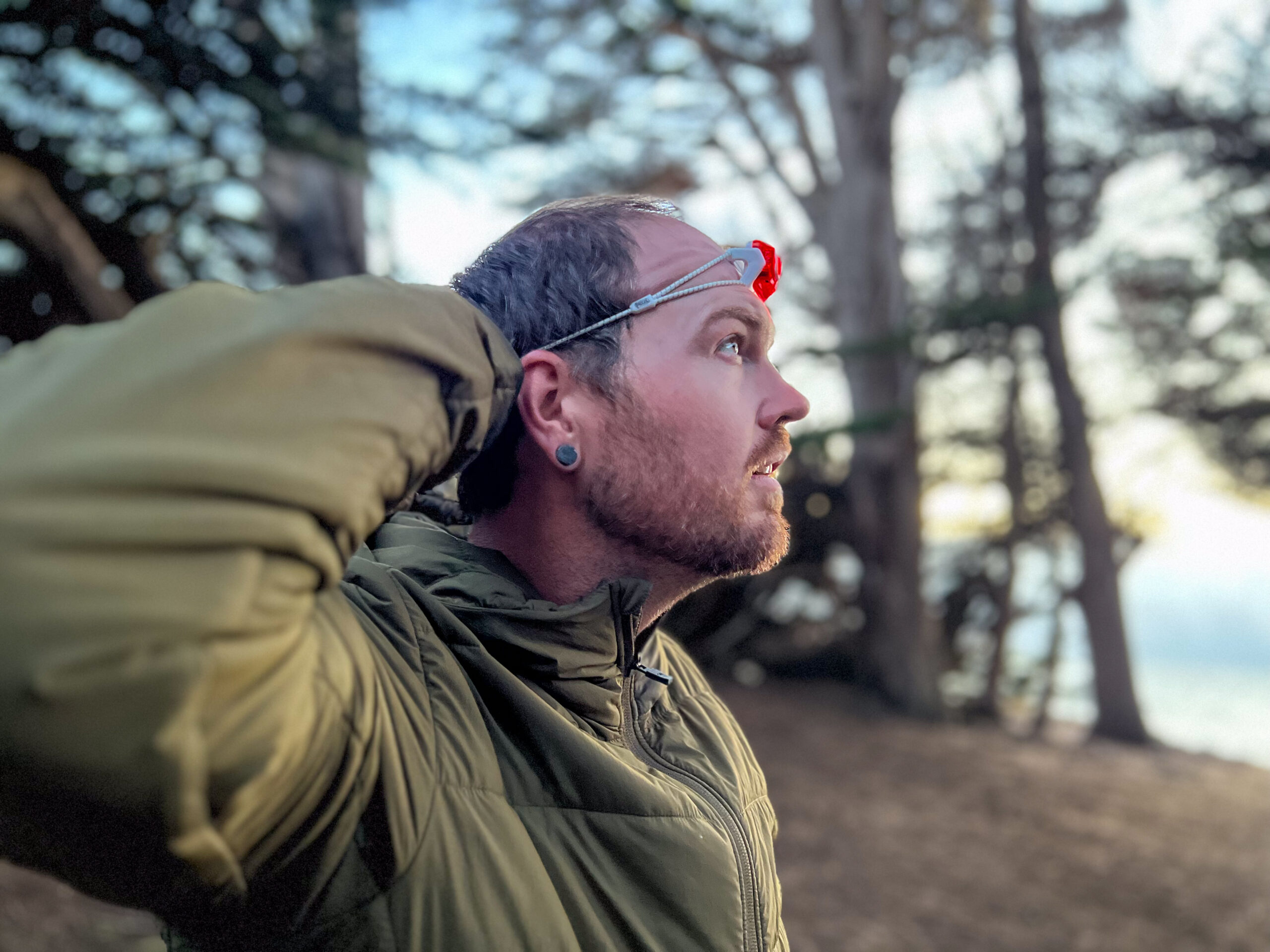
What Other Headlamps Should You Consider?
If you like the Bindi but want other options as well, check out these models or the rest of our lineup on the list of our favorite headlamps:
Nitecore NU25 UL Review: If you like the idea of the Bindi but want to explore other ultralight headlamp options, the NU25 UL is worth considering. While not quite as lightweight, the Nitecore is more affordable, offers more features, and remains comfortable to wear.
BioLite Headlamp 325: If you’re interested in an ultralight headlamp but aren’t a fan of the shock cord style straps, you might want to check out the BioLite Headlamp 325. It has a more traditional and comfortable strap while still weighing under two ounces.
